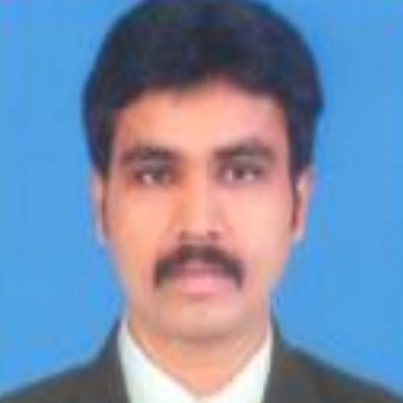
P. Nagaraja
Work place: Department of Computer Science and Applications, Gandhigram Rural Institute –Deemed University Gandhigram, Tamilnadu, India
E-mail: pnagaraja02@gmail.com
Website:
Research Interests: Medical Image Computing, Image Processing, Image Manipulation, Image Compression
Biography
Nagaraja P. is a Research Scholar (Fulltime) in the Department of Computer Science and Applications, Gandhigram Rural Institute - Deemed University, Dindigul, India. He received his Bachelor of Science (B.Sc.) degree in Physics in the year 2008 and Master of Computer Applications (MCA) degree in the year 2011 from Gandhigram Rural Institute - Deemed University. He is currently pursuing Ph.D. degree in Gandhigram Rural Institute- Deemed University. His research focuses on Brain Tissue Segmentation in MRI Head scans.
Author Articles
An Automatic Segmentation of Brain Tumor from MRI Scans through Wavelet Transformations
DOI: https://doi.org/10.5815/ijigsp.2016.11.08, Pub. Date: 8 Nov. 2016
Fully automatic brain tumor detection is one of the critical tasks in medical image processing. The proposed study discusses the tumor segmentation process by means of wavelet transformation and clustering technique. Initially, MRI brain images are preprocessed by various wavelet transformations to sharpen the images and enhance the tumor region. This helps to quicken the clustering technique since tumor region appears good in sharpened CSF region. Finally, a wavelet decomposition method is applied in CSF region and extracts the tumor portion. This proposed method analyzes the performance of various wavelet types such as Haar, Daubechies (db1, db2, db3, db4 and db5), Coiflet, Morlet and Symlet in MRI scans. Experiments with the proposed method were done on 5 volume datasets collected from the popular brain tumor pools are BRATS2012 and whole brain atlas. The quantitative measures of results were compared using the metrics false alarm (FA) and missed alarm (MA). The results demonstrate that the proposed method obtaining better performance in the terms of both quantity and visual appearance.
[...] Read more.Brain Tumor Boundary Detection by Edge Indication Map Using Bi-Modal Fuzzy Histogram Thresholding Technique from MRI T2-Weighted Scans
By T. Kalaiselvi P. Sriramakrishnan P. Nagaraja
DOI: https://doi.org/10.5815/ijigsp.2016.09.07, Pub. Date: 8 Sep. 2016
Tumor boundary detection is one of the challenging tasks in the medical diagnosis field. The proposed work constructed brain tumor boundary using bi-modal fuzzy histogram thresholding and edge indication map (EIM). The proposed work has two major steps. Initially step 1 is aimed to enhance the contrast in order to make the sharp edges. An intensity transformation is used for contrast enhancement with automatic threshold value produced by bimodal fuzzy histogram thresholding technique. Next in step 2 the EIM is generated by hybrid approach with the results of existing edge operators and maximum voting scheme. The edge indication map produces continuous tumor boundary along with brain border and substructures (cerebrospinal fluid (CSF), sulcal CSF (SCSF) and interhemispheric fissure) to reach the tumor location easily. The experimental results compared with gold standard using several evaluation parameters. The results showed better values and quality to proposed method than the traditional edge detection techniques. The 3D volume construction using edge indication map is very useful to analysis the brain tumor location during the surgical planning process.
[...] Read more.Other Articles
Subscribe to receive issue release notifications and newsletters from MECS Press journals